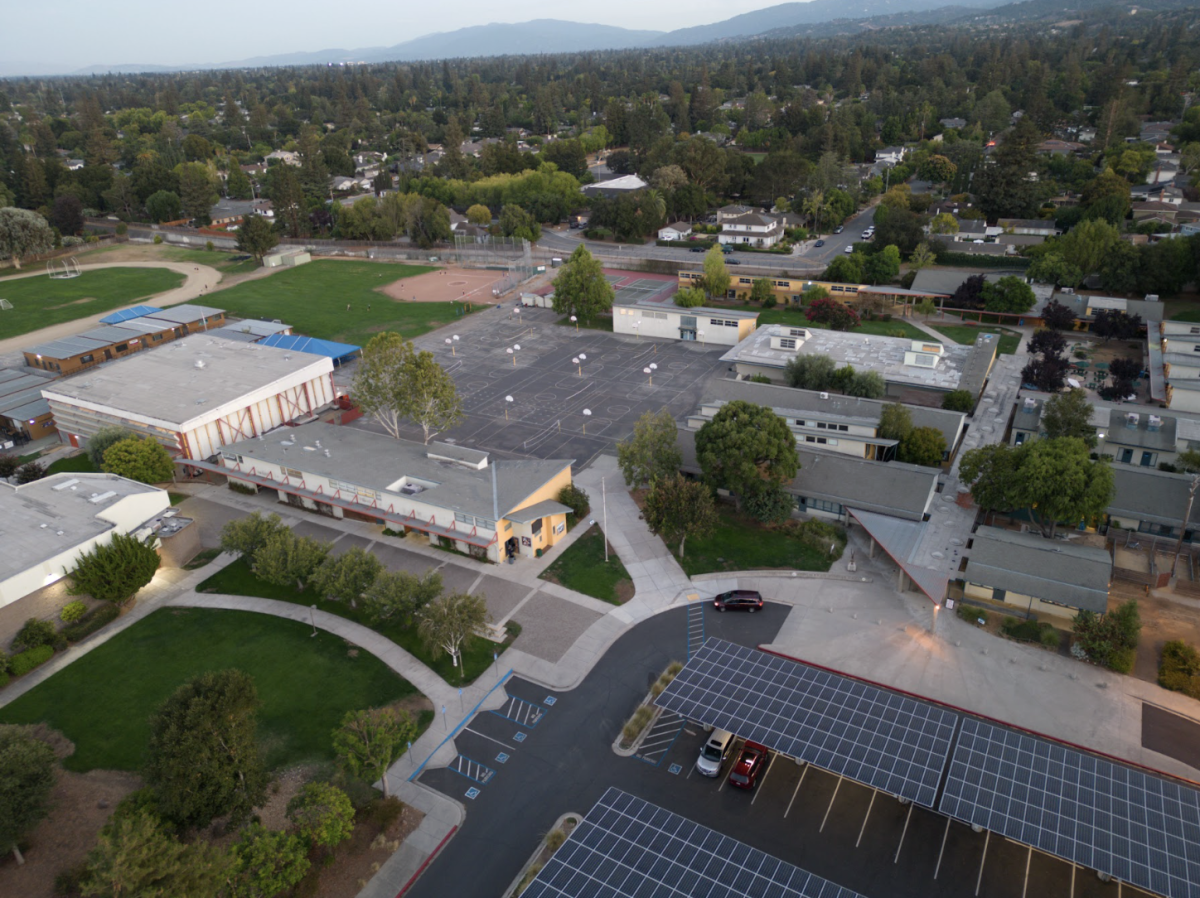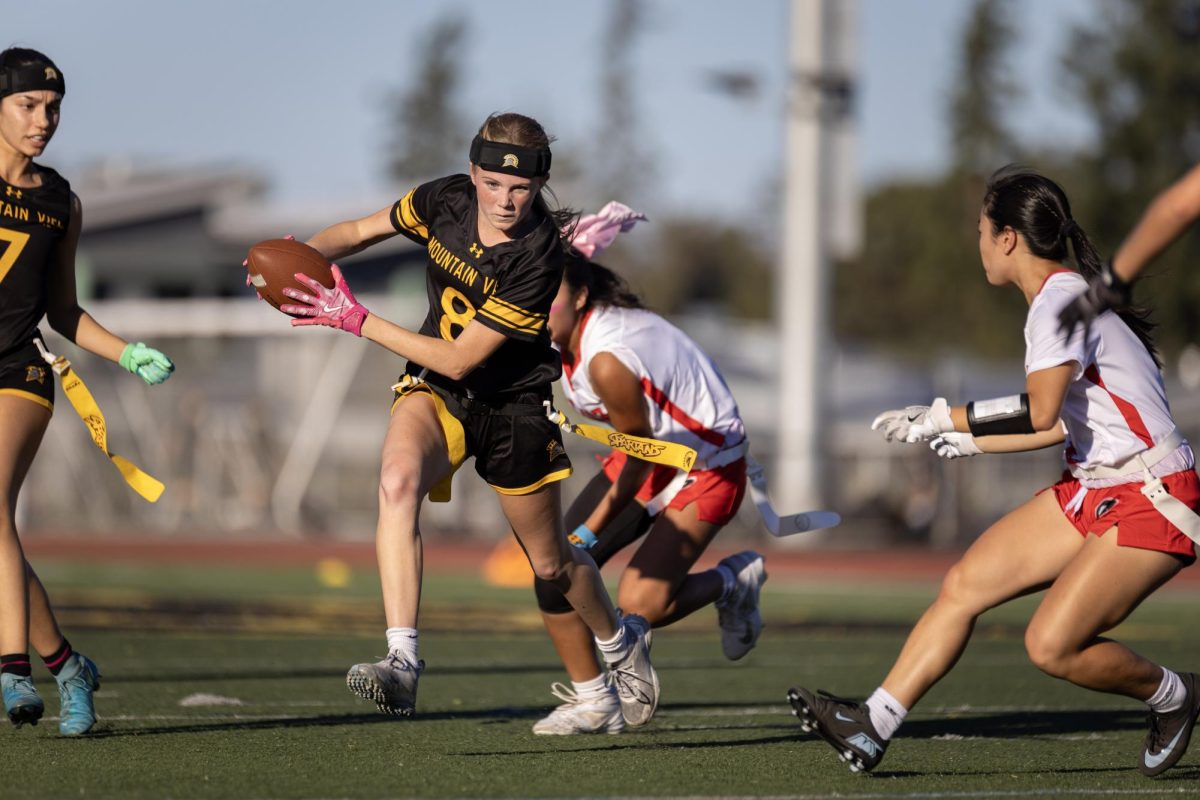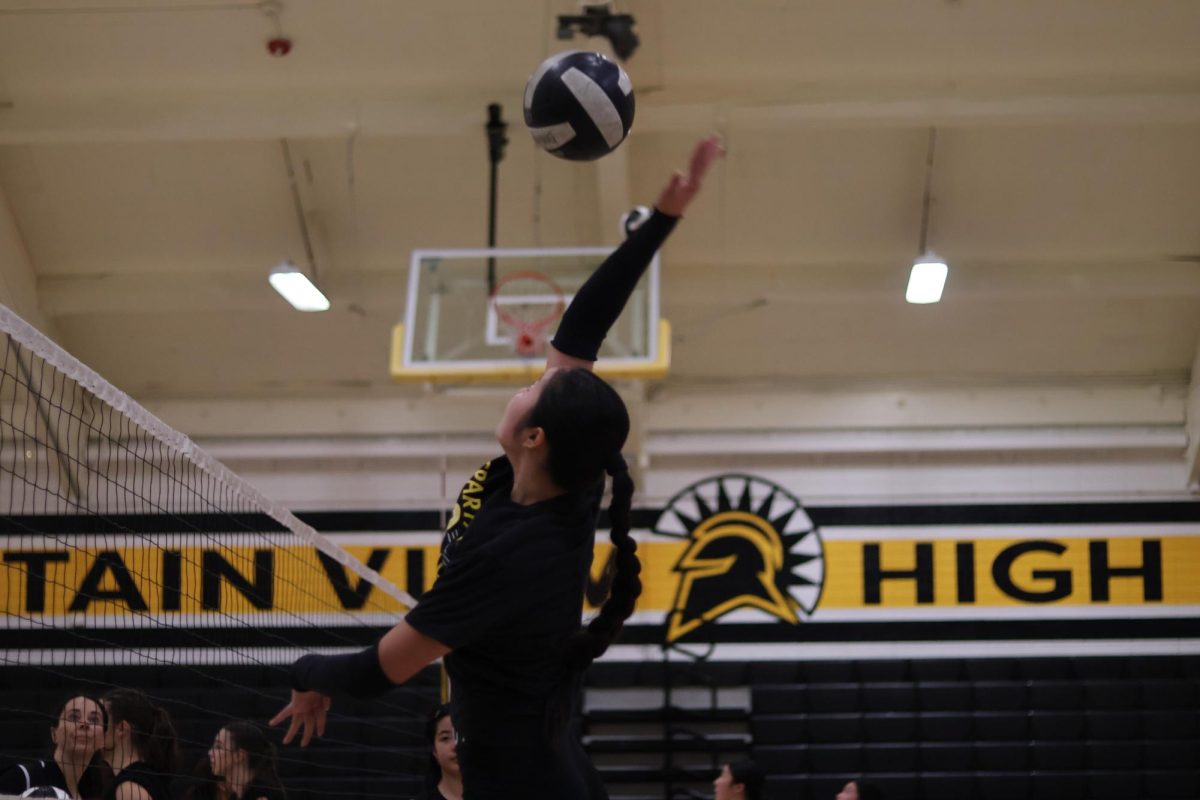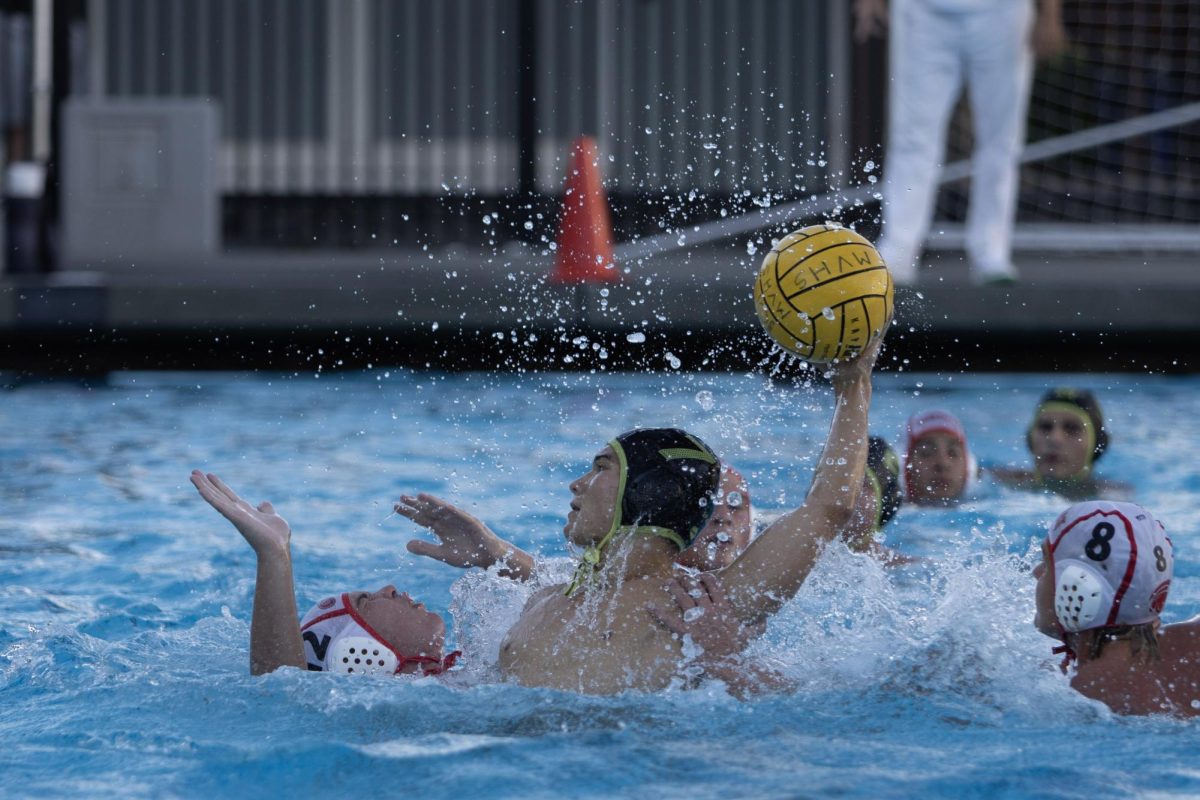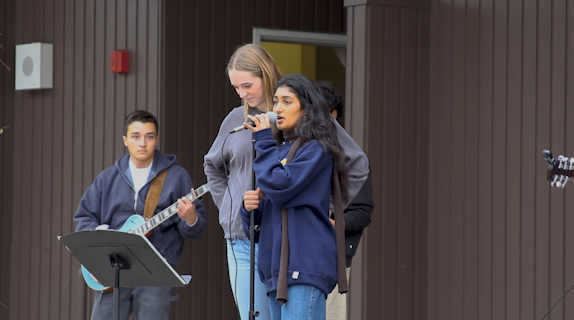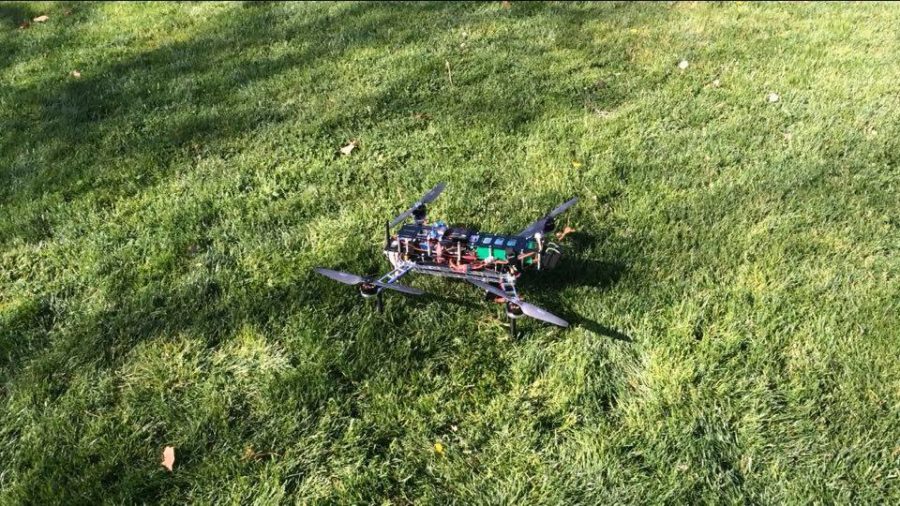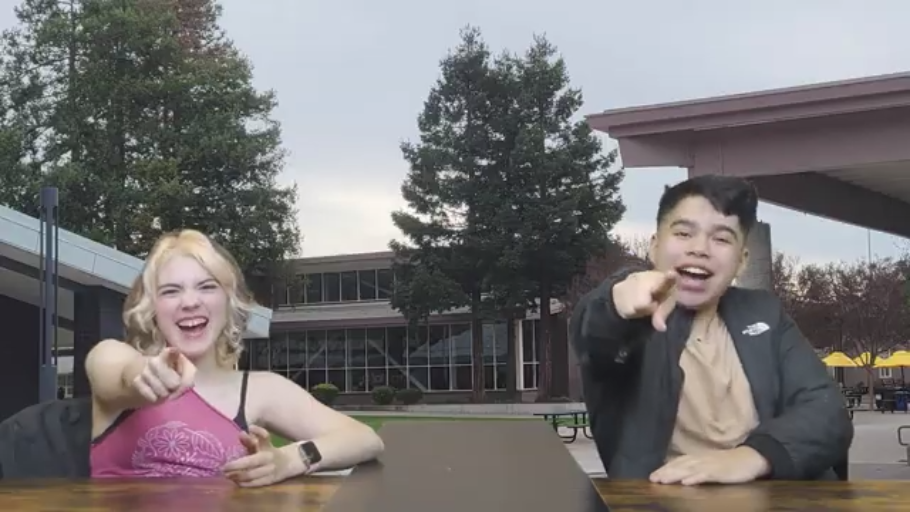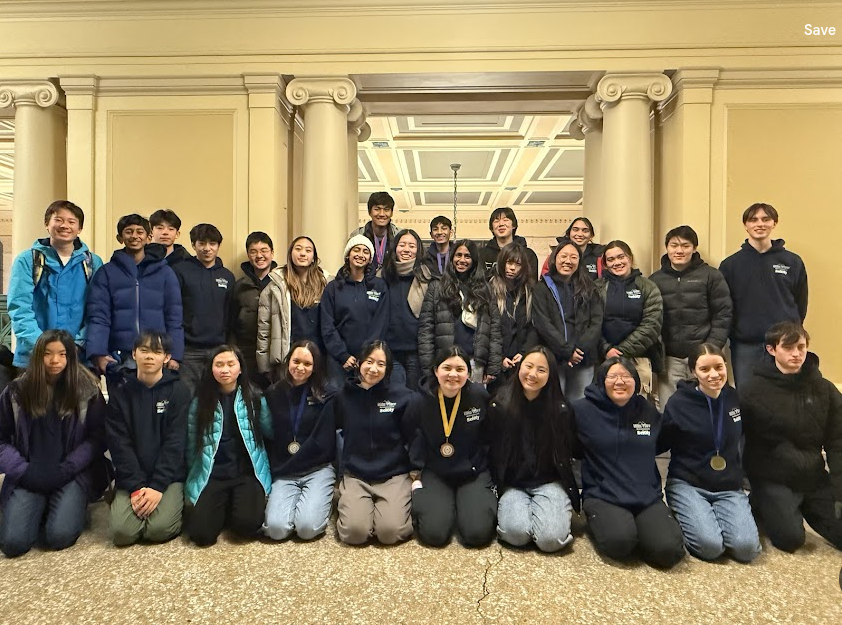As of February 2016, two engineering students, Nathan Atkinson and Carl Recine, have been building an Unmanned Aerial Vehicle to help Ms. Dunsmore’s Physics class with their annual “Mars Landing Egg Drop Project.” The objective of this project is to build a container with an egg inside, representing the Mars Rover, and then launch the construction into the sky without breaking the egg when it hits the ground. This simulates a successful landing on the surface of Mars.
Under the guidance of Phil Wiechec, the MVHS Engineering teacher, Atkinson and Recine have built a remote control quadcopter, or helicopter with four blades, that will assist in next year’s egg drop. The UAV will be able to drop the containers from a set height, with the help of a mechanical “servo arm,” or mechanical arm operating under an an electrical signal, that holds the package.
“We have two servos that are together, and then there’s a hook that hooks on and takes it up. When we are ready, they release it,” Wiechec said.
Another MVHS student who builds UAVs is Comran Morshed. He helped program the remote control for the engineering class’s quadcopter.
Morshed began building a UAV 2 years ago using his knowledge from his experience on the MVHS Robotics Team and videos online.
“The hardest part is to build them safely, which is a problem we have in robotics as well…. I didn’t trust this quad[copter] for the first month I was flying it, that it wouldn’t just fall out of the air or something ” Morshed said.
In light of this year’s trial run, Mr. Wiechec plans to introduce UAV building to next year’s Engineering 2 Class. Students in groups of two will each build a quadcopter.
The engineering class is currently partnering with the environmental science class to perform a similar egg drop project, intended to simulate aerial supply drops.
Recent years have seen a huge increase in the popularity of flying UAVs. In response to this, the Federal Aviation Agency has recently released rules for RC pilots to follow. Wiechec reported that the Atkinson’s and Recine’s drone is registered with the FAA.
“[UAV construction] will open up a whole new major in colleges and new career opportunities across the country. As students learn and understand about UAVs, I want our students to not only be prepared as they go to college, but also to be ahead of other students pursuing the same major.” Wiechec said.

